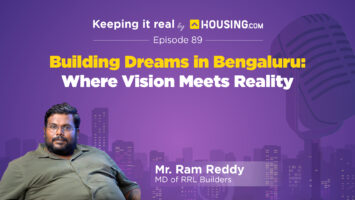In Srinagar, the capital city of the Indian Union territory of Jammu and Kashmir, there is a historic wooden arch bridge called Zero Bridge. Spanning the Jhelum River in a north-south direction, it connects Sonwar in the north to Rajbagh in the south. The bridge, which was initially built in the late 1950s under the leadership of the then-prime minister Bakshi Ghulam Mohammad, was shut down to vehicular traffic in the late 1980s because of the decay of its wooden frame. Zero Bridge is still a recognisable and significant building in Srinagar, despite being a pedestrian crossing.

Source: Pinterest
See also: Bogibeel Bridge Assam: Fact guide
Zero Bridge: History
Built only in the 1950s, when Prime Minister Bakshi Ghulam Muhammad ruled Jammu and Kashmir, Zero Bridge is one of the city’s more recent monuments. The bridge provided a vital connection between Sonwar and Rajbagh, allowing for simple transportation of both people and commodities. The bridge’s structural integrity, however, rapidly declined around the 1980s. The bridge can no longer carry higher weights because certain planks and supports have broken or fallen. For the protection of the populace, the authorities had to stop the flow of vehicles.
Zero Bridge: Etymology
There are two ideas circulating online regarding its name. The first one implies that Zero Bridge is related to the number because it was built before Amira Kadal Bridge, which is considered to be Srinagar’s official first bridge. This idea holds that the Zero Bridge came before the Amira Kadal Bridge, which was historically thought of as the Jhelum’s first bridge when it reached Srinagar.
A different viewpoint investigates the possibility that the bridge was given its name in honour of the project’s contractor. He was deaf, which in Kashmir is known as “Zorr.” As a result, the bridge acquired the name Zorr due to him. Later, it was changed to Zero Bridge to make the pronunciation easier.
Zero Bridge: Importance
The Zero Bridge has received a lot of attention, despite the fact that it could appear unimpressive in comparison to other Mughal structures. It is a popular gathering place where visitors love eating regional food and getting a close-up look at J&K’s history.
The Jhelum River location of the bridge and its attractive design makes it a well-liked location for photographers. The bridge also has a unique place in the hearts of the residents and is a significant landmark in the cultural history of the city.
Why is Zero Bridge famous?
Zero Bridge is a must-see attraction for anybody visiting Srinagar. The bridge is open every day of the year. Visitors can stroll across the pedestrian bridge while taking in the beautiful views of the Jhelum River and the surrounding hills. Also, there are a number of handicraft shops and street food stands next to the bridge, giving guests the opportunity to try regional fare and buy mementoes.
FAQs
When was the Zero Bridge constructed?
The bridge was constructed in the late 1950s.
Why was the Zero Bridge closed to vehicular traffic?
The bridge's wooden structure had weakened, making it unable to support heavier weights.
What is the significance of the Zero Bridge's name?
The name is shrouded in two theories - one suggests that it was named after the first bridge downstream of the Jhelum, while the other theory suggests that it was named after the deaf contractor who took the project.
Can visitors cross the Zero Bridge?
Yes, visitors can cross the bridge on foot as it is currently a pedestrian crossing.
What can visitors do at the Zero Bridge?
Visitors can explore the bridge's history, enjoy local cuisine, and purchase handicrafts and souvenirs from nearby stores.
Is the Zero Bridge open 24 hours?
Yes, the bridge is open 24 hours a day, throughout the year.
| Got any questions or point of view on our article? We would love to hear from you. Write to our Editor-in-Chief Jhumur Ghosh at jhumur.ghosh1@housing.com |






